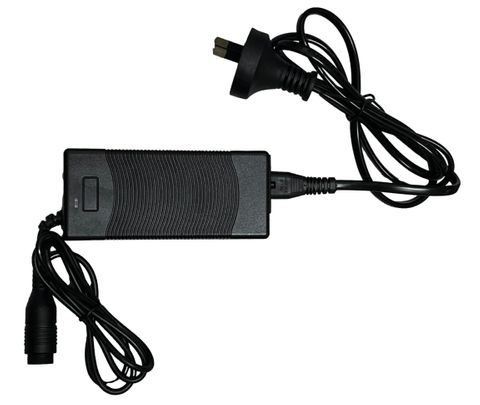- Home /
- Reels /
- Electric Reels /
- Sea Harvester Electric Reel Battery Charger
Shop Now
- Accessories
- Bait & Berley
- Berley Equipment
- Boating
-
Bonze Lures
- Angel Lures
- Atm
- Ballistic Lures
- Bonze Bank Walker
- Bonze Mad Max
- BTK Lures
- D Shackle Lures
- Darter Lures
- DLB Lures
- Exocet Lures
- Hawaiian Malolo Birds
- Hercules Lures
- Here For The Party Lures
- High Flier Kona Edition
- Jackhammer Lures
- Kahawai Lures
- Kraken Lures
- Merlin Lures
- Punisher Lures
- Rambo Lures
- The Doctor Lures
- The Heat Lures
- Trojan Lures
- Undertaker Lures
- Violator Lures
- Wepon Lures
- Braid
- Branded Floor Mats
- Cast Nets, Set Nets
- Clothing,Footwear,Hats
- Cray / Crab / Eel Nets / Pots
- Diving & Snorkeling
- Downrigger
- Duel Knives New Zealand
- Fishing Accessories/Tools
- Fishing Drone Accessories
- Fishing Drones
- Fishing Stickers
- Floats
- Flounder Fishing
-
Game Fishing
- Accessories
- Black Magic Game Lure
- Bonze Accessories
- Catch Flags
- Game Accessories/Tools
- Game Swivels
- Leadering Gloves
- Lure Skirts
- Mrs Palmer Game Lures
- Needle Fish Skirts
- Octopus Skirts 10cms
- Outrigger & Accessories
- Skippy Bungy Rigs
- Skippy Feathered Lures Rigged
- Skippy Hex Heads Unrigged
- Skippy Lures Rigged
- Teasers & Dredges
- Williamson Lures
- Wind On Leaders
- Gift Vouchers
- Gimble Belts & Harness
- Handcasters
- Hapuka ,Broadbill
- Icebins,Insulated Bags, Fishbins
- Kayak Related Products
- Knives
- Landing Nets & Gaffs
- Longline/ Kontiki Fishing
-
Lures & Jigs
- Accessories
- Assist Hooks
- Bakubaku Orange/Silver
- Dr Evil Lures
- Feathers
- Fly Fishing Lures
- Gillies Baitfish Lures
- Halco Kingfish Trolling Lures
- Micro Jigs
- Noeby Kabura Slider
- NZ Made King Poppers
- Ocean Angler Fish Fingers
- Ocean Angler G-Bomb Lures
- Ocean Angler Sliders
- On Top Lures
- Rapala Trolling Lures
- Saltwater Flies
- Shimano Bettyu Stickbaits
- Shimano Lucanus
- Shimano Metal Shot Tungsten Jigs
- Shimano Ocea Wild Response
- Shimano Pebble Jigs
- Shimano Sardine Ball
- Shimano Soare A-Jig
- Shimano Wingfall Jigs
- Skippy Feathered Lures Rigged
- Skutes
- Slow Jigs
- Smiths Jigs and Kahawhai Lures
- Speed Jigs
- Squid Jigs
- Zeets Lures
- Zeets Trolling Lures
- Mazumi Rods
- Mono & Leader
- Personal Locator Beacons
- Pre Made Rigs
- Reels
- Release Rulers
- Rod Building, Repairs
- Rod/Reel Combos
- Rods
- Scallop Dredges
- Seaharvester
- Sharpening Tools
- Sinkers
- Smokers / Smoking Supplies
- Softbaits, Jig Heads, Attractants
- Squid Fishing
- Sunnies Polarised
- Surf Casting
- Surfcasting Sinkers
- Tackle Management
- Terminal Tackle
- Whitebaiting
Sea Harvester Electric Reel Battery Charger
Description
The Sea Harvester Electric Reel battery charger is designed for the lithium-ion battery charger model number XMS-L4S20.
Specifications:
Input:
Voltage: 100V-240V AC
Frequency: 50/60 Hz
Maximum current: 1.2 A
Output:
Voltage: 16.8V
Current: 2.0 Amp-hours (Ah)
It's important to note that the charger is designed specifically for the Sea Harvester Electric reel battery and is not intended for other uses.
Also, the charger does not have any serviceable parts, meaning it's not user-repairable
Safety
Safety is crucial when dealing with lithium-ion battery chargers to prevent accidents and ensure the longevity of both the charger and batteries,
Read the manual: Always read and understand the charger's user manual before use. Different chargers may have specific requirements and safety guidelines.
Use the right charger: Only use chargers that are specifically designed for lithium-ion batteries and match the correct voltage and current ratings.
Input voltage range: Ensure the input voltage of the charger matches the voltage in your region (e.g., 100V-240V AC, 50/60 Hz) to avoid damage from overvoltage or undervoltage.
Avoid water exposure: Keep the charger away from water, moisture, and other liquids to prevent electrical shock and damage to the charger.
Ventilation: Use the charger in a well-ventilated area to dissipate heat properly. Avoid using the charger on soft surfaces like beds or couches that may block airflow and cause overheating.
Unattended charging: Never leave the batteries unattended while charging, especially overnight or for an extended period. Always unplug the charger when not in use.
Temperature: Charge batteries in a temperature-controlled environment. Extreme temperatures can affect the performance and lifespan of lithium-ion batteries.
Avoid overcharging: Avoid charging the batteries for an extended period once they reach 100% capacity. Overcharging can degrade the battery and may pose a safety hazard.
Avoid extreme discharging: Do not discharge lithium-ion batteries to the point of complete depletion as it can damage the battery and may make it unsafe for recharging.
No modifications: Do not attempt to modify the charger or batteries. Use them as intended by the manufacturer.
No mixing: Do not mix different types, brands, or capacities of batteries in the charger. Use batteries of the same type and condition.
Storage: Store lithium-ion batteries and chargers in a cool, dry place away from direct sunlight and flammable materials.
Dispose properly: If a battery or charger is damaged, do not use it. Dispose of damaged or old batteries following proper recycling guidelines.
Keep away from children: Store chargers and batteries out of reach of children and pets.
Fire safety: In case of fire or smoke while charging, unplug the charger and move it away from flammable materials. Use a fire extinguisher if necessary.
By following these safety instructions, you can minimize the risk of accidents and ensure the safe and efficient operation of your lithium-ion battery charger.
Always prioritize safety

